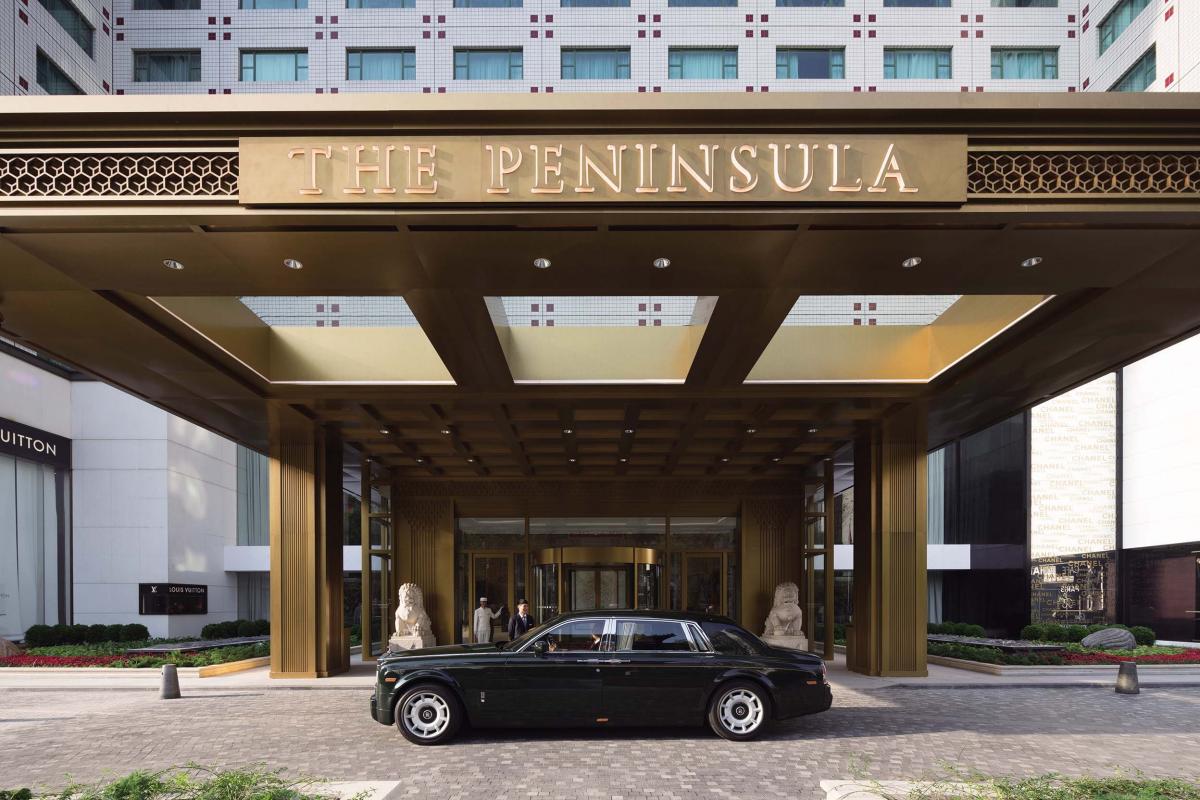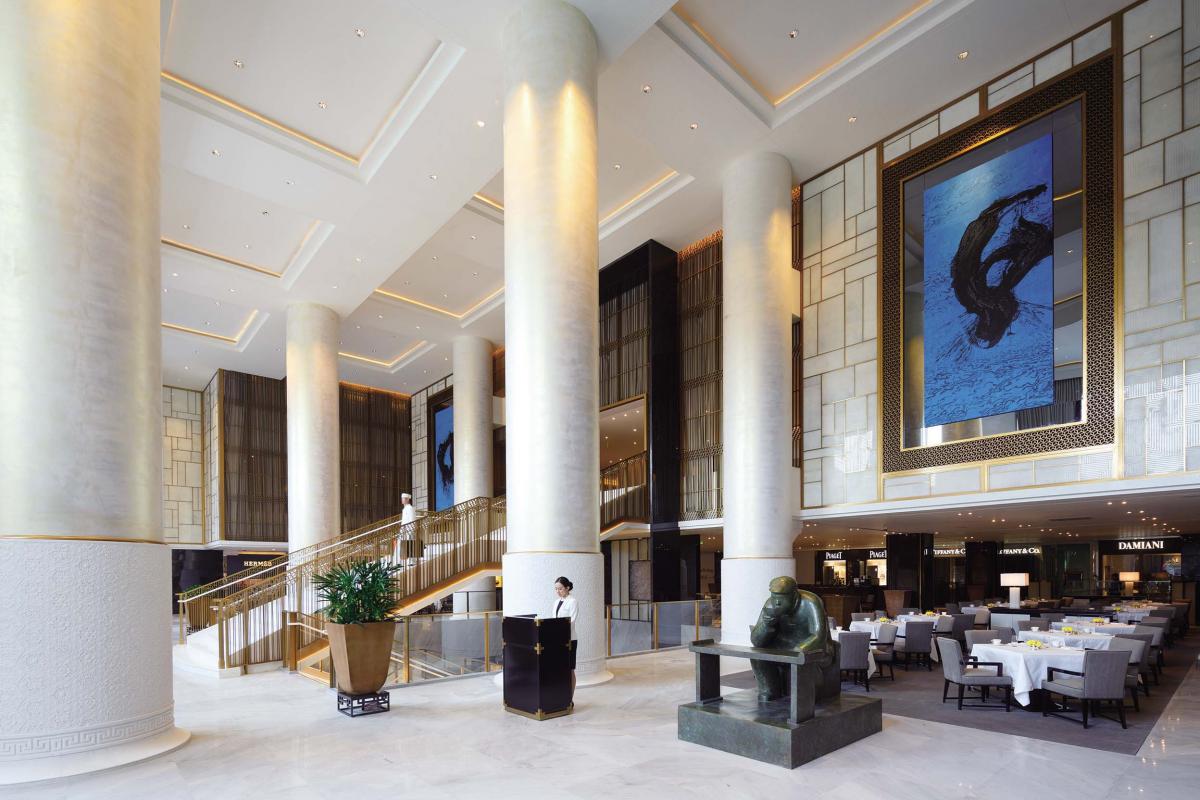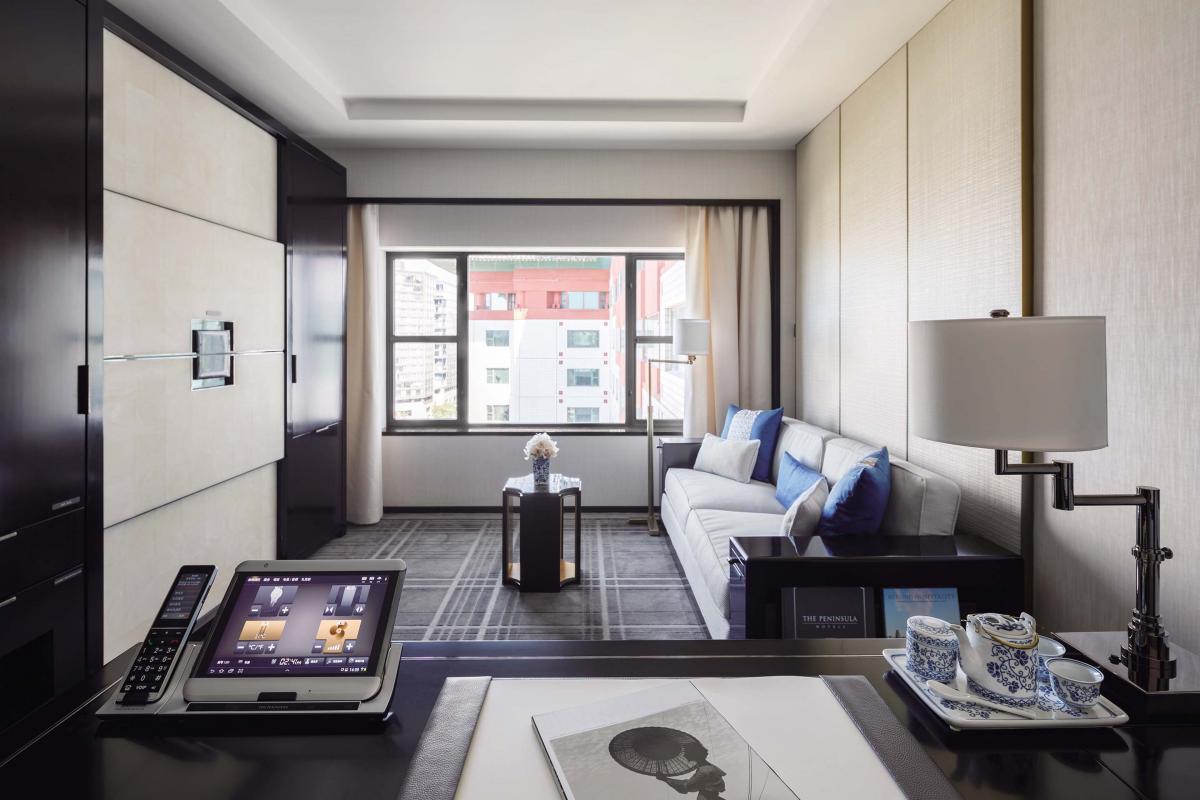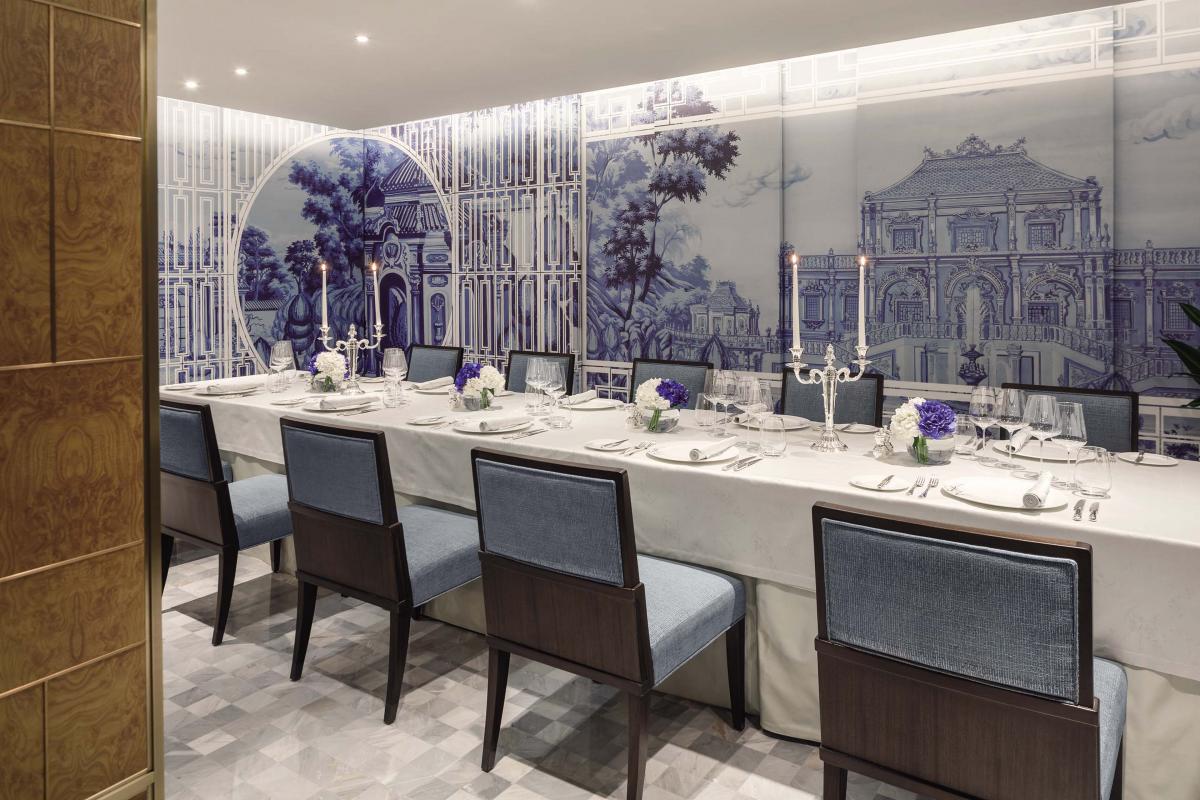
By April 2017, the Peninsula Palace Hotel will have completed its US$123 million extensive renovation of what was already one of the best known luxury hotel properties in Beijing. If the early 1990’s white-tiled, pavilion-roofed building (a classified heritage property) revealed China’s attempt to qualify western-defined modernity with Chinese characteristics, then the new renovation combining classical Imperial themes and the best contemporary art within an ultra-luxury context is more than a simple coming of age. With super-sized, beautifully detailed guest rooms, a new check-in approach and its own art gallery, the Peninsula Palace Hotel hints at China determining its own path to the future.
When the Palace Hotel first opened its doors in 1989, it introduced the first luxury shopping mall to Beijing. More than a symbol for statesman Deng Xiaoping’s famous aphorism “to get rich is glorious”, it became the venue for the newly wealthy to realize their early consumerist fantasies. Since 1990, the year Peninsula Hotels took up management, the Palace Hotel has been THE hotel for Beijing’s cognoscenti and elite.

Welcome to the newly renovated Beijing Peninsula Hotel
Besides a US$27 million refurbishment in 2002 that focused on the Presidential Suite, club floor and the two restaurants, Chinese and Western, little had changed between 1989 and 2012. When Joseph Sampermans, previously Hotel Manager at the sister Hong Kong property, was appointed to be GM and tasked with the project of renovating this Grande Dame, plans for making the premier hotel in Northern Asia commenced. “How do you think it should be?’ he asked Nancy and myself at an early meeting. “Like a Peninsula,” we rejoined.
In the same property that previously had served 525 guest rooms, from April 2017 when all the rooms will be returned, there will only be 230. Even though the hotel insists these 230 are mostly “rooms”, let me share a secret with you. They’re not. Each room, with a standard area of 650 square feet or 65 square meters is actually a suite offering a separate bedroom, bathroom, dressing room, and a sitting room. Which begs the question: if the rooms are already suites, then what are the suites? Large would be the apposite description – whereas, broadly speaking, two former rooms were combined to create a new room, at least three former rooms have been combined to create the newly styled suites. And with 61 suites out of 230 keys, this hotel is luxuriously equipped. If you bear in mind Peninsula and Joseph’s bold ambition to create the finest hotel in northern Asia, the grandiose use of space makes sense.

Newly redesigned lobby featuring Zhang Du bronze sculptures
Apart from the handsome renovation of all the surrounding retail areas, there have been three main changes in the lobby. Most importantly, seating for a new dining area has been brought to the fore behind the beautiful over-sized Zhang Du bronze sculptures. The sight and sounds of a dining crowd personalizes the vast space that this three story lobby encompasses. Structurally, the under-lit staircase has been modernized to lead from the ground floor up to the banquet areas, thereby dividing the space in two between six beautiful new white marble pillars. As a result, banquet and conference guests are neatly guided through the lobby. Room guests, by contrast, are met near the front doors by cross-trained, iPad equipped hotel staff to be whisked to a welcome area, and from there directly to their rooms where check-in takes place.

Contemporary living space in the Peninsula Suite
The detailing of the upholstered rooms was a marvel. The leather cladding of the drawers, neatly labelled, makes you think of the upholstery in the Peninsula Rolls Royce. The blue and white couch both complements and contrasts with the muted whites and creams of the room. The richly appointed bathroom, with black marbled floors and white marble walls and a matching abstract ink painting above the bath, is a space that works.
“Intuitive technology” has been a big part of Peninsula’s efforts since the renovation of the Hong Kong Peninsula with which Joseph was also involved. The Beijing Peninsula takes this journey one stage further with the addition of mobile phone ports in both the sitting room and bedroom, which instantly connect your phone with the room’s multimedia system and allow you immediately to watch videos on the LCD Screen and play your music on the stereo without ever having to touch a button. In addition to these new services, Peninsula of course still provides free international VOIP calls from the room telephone. Peninsula’s ambition is not to have gadgetry for its own sake, but to provide room services immediately and intuitively. For instance, I used the hotel room’s iPad to order an iron to my room. To my surprise, it arrived promptly ten minutes later, such that I was able to get ready for dinner.

Traditional blue & white ceramics in the Jing Restaurant
Jing, the western restaurant, also got a complete make over to become very much at one with a more sophisticated presentation of Beijing. The long cocktail bar vestibule leads into an elegant room whose walls are adorned with appealing Chinese contemporary art. It is only on a second take that one notices recesses leading to private dining spaces, such that the restaurant is both intimate and capacious at the same time. (The art works are so good, that we ended up touring the entire space as though it were an art gallery). Spanish chef, Alberto Becceril, working with a farm to table concept that prioritizes locally-sourced organic produce, conjures refreshingly innovative and elegant dishes. Becceril’s dishes in no way resemble some kind of dramatic chemistry experiment. Their traditional grounding is as apparent as his artistry in the sophisticated new interpretation and presentation.
This sophistication is a theme that echoes throughout the project. Its contemporary art consistently makes reference to classical or traditional themes or materials. The abstract ink painting in the bathroom reflects the deep tradition of calligraphy. The Zhang Du bronzes remind one of statues typically greeting visitors in traditional tea houses. One of the art pieces in Jing plays with traditional blue and white ceramics; a second displays the traditional skill of embroidery. Similarly, the guest room design combines the classic upholstery one finds in traditional car brands with the latest in-room technology. Everywhere you see a clever interplay between contemporary and traditional design to create an elegant interpretation of the present.
It’s both a thrilling and tough job to be an opening GM, the arbiter of an entirely new hotel project. Joseph was tasked with creating the best hotel in Northern Asia. Has he succeeded? This is a question that only time and you can answer. However, there are two undeniable facts. Firstly, Joseph has helped to create a Peninsula worthy of the name. That’s challenging because of the paradox of ensuring that the property is not formulaic whilst simultaneously adopting elements common to the brand. Secondly, Joseph and Peninsula have given it their all – there has been a massive investment in design, contemporary art, technology, and space harnessed within a sense of style that is the preserve of only a handful of hotel companies. The property does not hedge its bets behind tradition. It extends itself ambitiously to the future, and in so doing it helps define its locale. The China of 2016 is far more self-confident, stylish and global than thirty years ago; it is hardly surprising that the Peninsula expresses this.